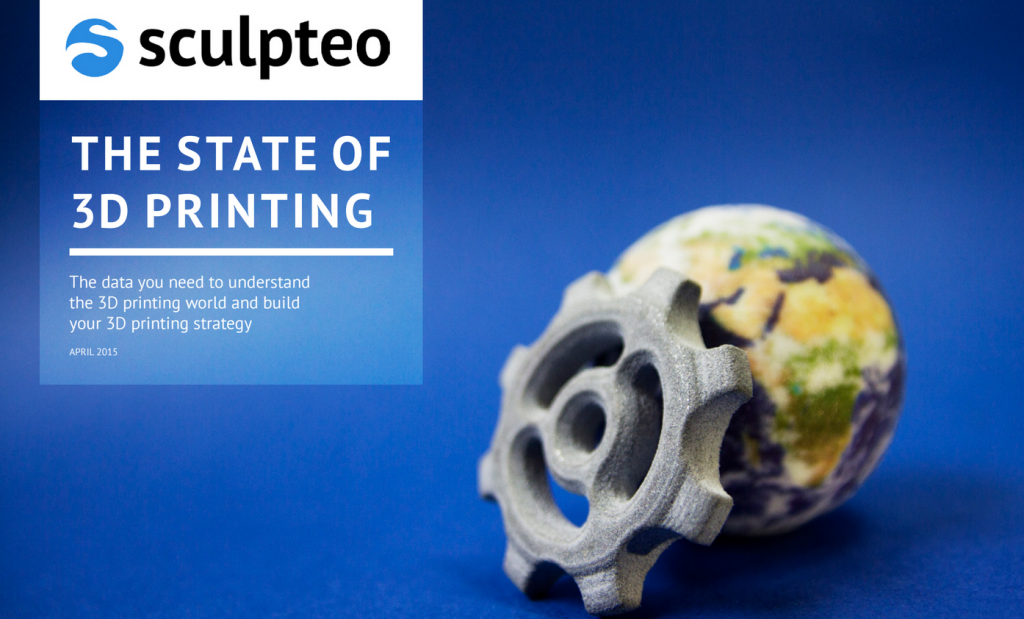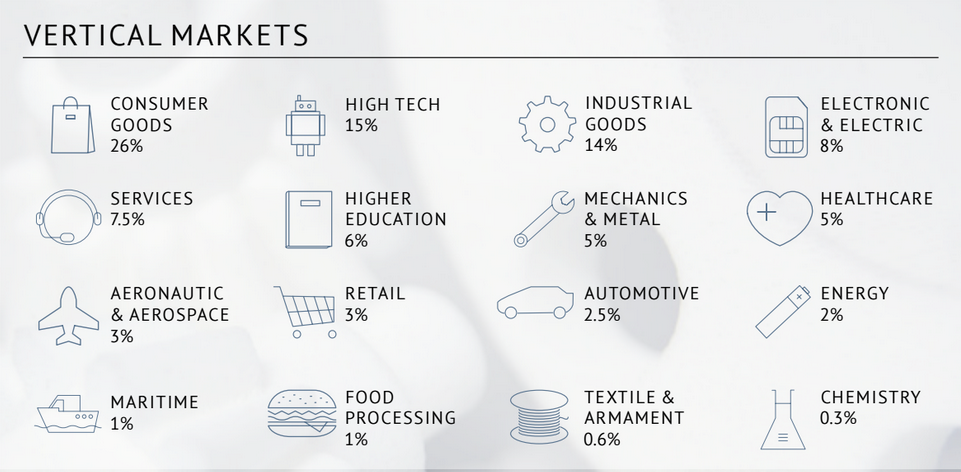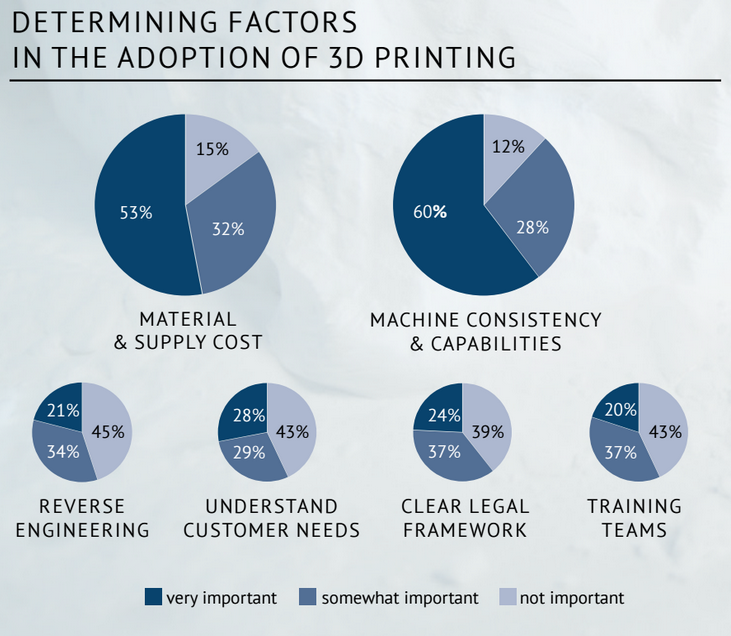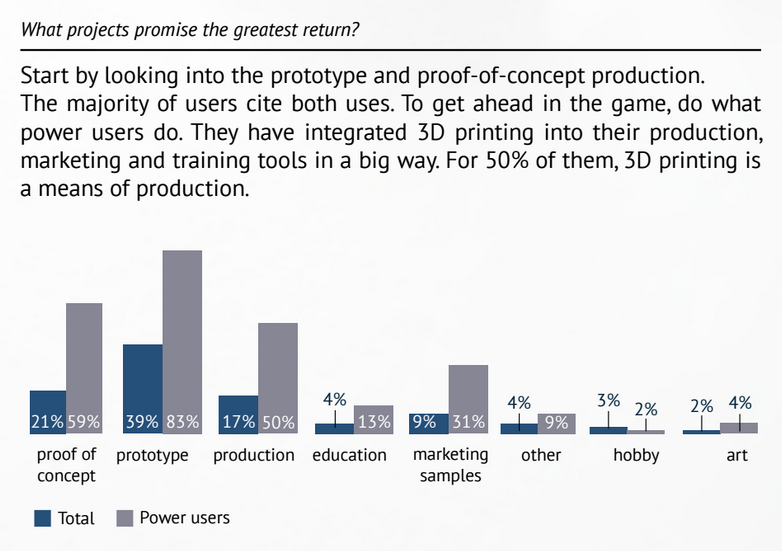 Calling it a diagnostic on the state of 3D printing, Sculpteo has leveraged their status as one of the largest 3D printing service providers in the industry to compile a comprehensive, in-depth report on where 3D printing stands both as an industry and as a technology today. Their “State of 3D Printing” industry report compiles responses from more than a thousand participants from as wide a selection of industries that utilize 3D printing as possible. The results are almost entirely uniform in suggesting that the 3D printing industry is a growing one, agreed upon by the wide range of businesses involved in the study.
Calling it a diagnostic on the state of 3D printing, Sculpteo has leveraged their status as one of the largest 3D printing service providers in the industry to compile a comprehensive, in-depth report on where 3D printing stands both as an industry and as a technology today. Their “State of 3D Printing” industry report compiles responses from more than a thousand participants from as wide a selection of industries that utilize 3D printing as possible. The results are almost entirely uniform in suggesting that the 3D printing industry is a growing one, agreed upon by the wide range of businesses involved in the study.
Sculpteo says their survey is the first of its kind to draw its data directly from a large sampling of international businesses to demonstrate that an overwhelmingly significant number of its responders intend to increase their spending on 3D printing services and technology. According to the report, 44% of survey respondents said that they would increase spending on 3D prints by at least 50%, while 68% intend an overall increase by next year.
 The numbers are pretty clear, as industries and experts ranging from the aerospace industry to consumer electronics to food processing all seem to be poised to expand 3D printing usage within their respective business models. The business sector showing the most growth is, unsurprisingly, the use of 3D printing for rapid prototyping and for the creation of proof of concepts. However, health care, aerospace, and education are all expected to see notable jumps in 3D printing spending. And even industries that have traditionally been outliers–like retail, food processing, and energy production–are anticipating increases in spending.
The numbers are pretty clear, as industries and experts ranging from the aerospace industry to consumer electronics to food processing all seem to be poised to expand 3D printing usage within their respective business models. The business sector showing the most growth is, unsurprisingly, the use of 3D printing for rapid prototyping and for the creation of proof of concepts. However, health care, aerospace, and education are all expected to see notable jumps in 3D printing spending. And even industries that have traditionally been outliers–like retail, food processing, and energy production–are anticipating increases in spending.
The study also shows which areas seem to be the most important to businesses using 3D printing technology and services. Beyond rapid prototyping, which 32% of respondents cite as being a priority to them, 28% of businesses are also looking to create individually customized, end-use products, and 13% are using 3D printing to increase production flexibility. Other notable priorities include reducing tooling investment (10%), optimizing demo expenses (10%), and improving spare parts management (4%).
The survey respondents’ expectations of their 3D printing priorities within five years mirror current expectations–with a few notable exceptions. Businesses are expecting to increase the amount of 3D printing equipment that they utilize, with 19% calling it a priority in the next five years versus it only being a priority for 13% this year. Increasing production flexibility will become more important in five years’ time for 16%, while improving spare parts management jumps to 6%.
 While individual uses and priorities vary wildly from industry to industry, 53% of surveyed respondents say that the prices of supplies and equipment are very important factors in the use and adoption of additive manufacturing and 3D printing technology. While a whopping 60% consider 3D printer performance, consistency, and capabilities as very important factors when determining adopting or expanding 3D printing technology usage.
While individual uses and priorities vary wildly from industry to industry, 53% of surveyed respondents say that the prices of supplies and equipment are very important factors in the use and adoption of additive manufacturing and 3D printing technology. While a whopping 60% consider 3D printer performance, consistency, and capabilities as very important factors when determining adopting or expanding 3D printing technology usage.
Interestingly, the learning curve of using 3D printing technology seems to be diminishing as 43% of businesses consider personnel training a much less important obstacle. 43% of respondents also say that customer needs in regards to 3D printing technology aren’t an especially important factor in adopting or expanding their 3D printing capabilities.
The study also noted an interesting division between the role of 3D printing within European businesses and American businesses using 3D printing technology. The study revealed that businesses in Europe tend to see 3D printing as a skilled job requiring trained technicians who are specialists in using the technology. Conversely, American companies expect 3D printing technology that is accessible to everyone working for them. However, Sculpteo dismisses the notion that these differences are born of opposing business practices and they suggest that more likely they are the result of European and American businesses having different priorities. They feel that it is more likely that rather than viewing 3D printing differently they are simply using the technology in ways that are tailored to their company’s individual strengths and needs. This division is an area that Sculpteo intends to revisit for future reports.
 While there is certainly a wealth of data available in Sculpteo’s industry report, it is not nearly as comprehensive or expansive as the Wohlers Report. One of the main differences is the sampling of respondents was overwhelmingly received from American and European continents. In fact 91% of the participants are from the US or Europe. That obviously leaves out the rapidly expanding 3D printing industries throughout Asia. However, Sculpteo CEO and founder Clément Moreau makes a point of addressing the differences between their State of 3D Printing report and the Wohlers Report.
While there is certainly a wealth of data available in Sculpteo’s industry report, it is not nearly as comprehensive or expansive as the Wohlers Report. One of the main differences is the sampling of respondents was overwhelmingly received from American and European continents. In fact 91% of the participants are from the US or Europe. That obviously leaves out the rapidly expanding 3D printing industries throughout Asia. However, Sculpteo CEO and founder Clément Moreau makes a point of addressing the differences between their State of 3D Printing report and the Wohlers Report.
“Of course we are aware of the shortcomings and drawbacks present in this first report, and for example we’re not under any illusions that it compares to the annual Wohlers Report, which is indispensable for people in our industry. However whereas the Wohlers Report collects expert data we have opened up a direct line to the crowd of users themselves. We will leave it up to the specialists among you to study the differences between the two,” explained Moreau in his forward.
Don’t let that suggest, though, that the Sculpteo report doesn’t contain an incredible amount of usable, real world data. The report is broken into four sections, the first detailing 3D printing trends in 2015. Then follow a geographic insight section that examines differences between the US and Europe, a massive sectorial insights section featuring figures and charts that allow users to compare their businesses to others in the same industry, and a detailed guide that helps businesses looking to adopt 3D printing technology develop a strategy. The strategy guide walks prospective companies through the process of evaluating which parts of their business would benefit from 3D printing, how much they should consider investing, and which types of technology fits their needs.
 You can read the entire Sculpteo “State of 3D Printing” industry report here. The report was expertly written by Allison Simonot, Arthur Cassaignau, and Marine Coré-Baillais and it is quite friendly and easy to understand. It should be worth a look to anyone interesting in 3D printing, not just businesses using the technology or looking to invest in it.
You can read the entire Sculpteo “State of 3D Printing” industry report here. The report was expertly written by Allison Simonot, Arthur Cassaignau, and Marine Coré-Baillais and it is quite friendly and easy to understand. It should be worth a look to anyone interesting in 3D printing, not just businesses using the technology or looking to invest in it.
Subscribe to Our Email Newsletter
Stay up-to-date on all the latest news from the 3D printing industry and receive information and offers from third party vendors.
You May Also Like
Precision at the Microscale: UK Researchers Advance Medical Devices with BMF’s 3D Printing Tech
University of Nottingham researchers are using Boston Micro Fabrication‘s (BMF) 3D printing technology to develop medical devices that improve compatibility with human tissue. Funded by a UK grant, this project...
3D Printing Webinar and Event Roundup: April 21, 2024
It’s another busy week of webinars and events, starting with Hannover Messe in Germany and continuing with Metalcasting Congress, Chinaplas, TechBlick’s Innovation Festival, and more. Stratasys continues its advanced training...
3D Printing Webinar and Event Roundup: March 17, 2024
It’s another busy week of webinars and events, including SALMED 2024 and AM Forum in Berlin. Stratasys continues its in-person training and is offering two webinars, ASTM is holding a...
3D Printed Micro Antenna is 15% Smaller and 6X Lighter
Horizon Microtechnologies has achieved success in creating a high-frequency D-Band horn antenna through micro 3D printing. However, this achievement did not rely solely on 3D printing; it involved a combination...





























